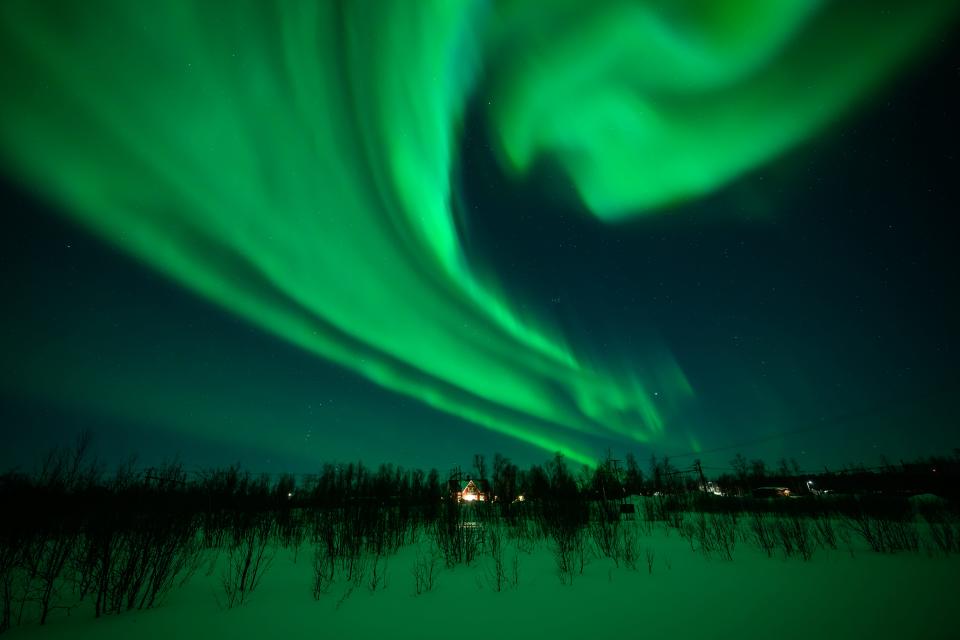What time will the Northern Lights be visible tonight? Why we could see them in Oklahoma
If you've ever wanted to see the Northern Lights but can't make the trip north, tonight may be your lucky night.
The National Weather Service's Space Weather Prediction Center has issued a "G4 (Severe) Geomagnetic Watch" for May 11, which has Northern Lights-hopefuls excited across the United States.
Here's what the forecast means, including when the aurora will be visible and what your best chances of seeing it in Oklahoma are.
Aurora forecast: Will the Northern Lights be visible tonight?

The Space Weather Prediction Center said several coronal mass ejections from the sun, or "large expulsions of plasma and magnetic field from the Sun’s corona," are expected to arrive at Earth late on May 10 or early May 11.
Auroras could be visible over most of the northern half of the United States, and the prediction center said the Northern Lights could be seen as far south as Alabama or northern-California.
A G4 (Severe) Geomagnetic Watch has been issued for May 11... pic.twitter.com/CeEHWEUFiQ
— NOAA Space Weather Prediction Center (@NWSSWPC) May 9, 2024
How to see the Northern Lights in Oklahoma
A major requirement for viewing the Northern Lights is clear skies, and the National Weather Service in Norman said Oklahoma cloud cover should be limited the night of May 10.
While Oklahomans likely won't be able to view the lights overhead, the office said auroras could be visible along the northern horizon, especially with a camera.
The best chances of seeing auroras are late at night, between 10 p.m. and 2 a.m. local time, away from city lights.
Why will the Northern Lights be visible so far south?
With the phenomenon's name indicating its main viewing area is the north, why could we see them as far south as Oklahoma?
The Aurora Borealis has in fact been appearing more frequently throughout the United States, like in 2023 when the lights were seen as far as Arkansas in the South and Arizona in the West.
This increase in widespread sightings is thanks to the "solar maximum," which is expected to peak this year, according to USA Today.
"There have been an increase in aurora seen in general on Earth," Shannon Schmoll, the director of the Abrams Planetarium at Michigan State University told USA TODAY last year. "The sun has been more active, resulting in more solar storms that cause solar flares and coronal mass ejections (CME)."
What causes the Northern Lights?
When the CME's reach Earth, they react with the magnetic field and create a display known as the Northern Lights.
Contributing: Doyle Rice, USA Today
This article originally appeared on Oklahoman: Northern Lights forecast: How Oklahomans could see the Aurora Borealis

